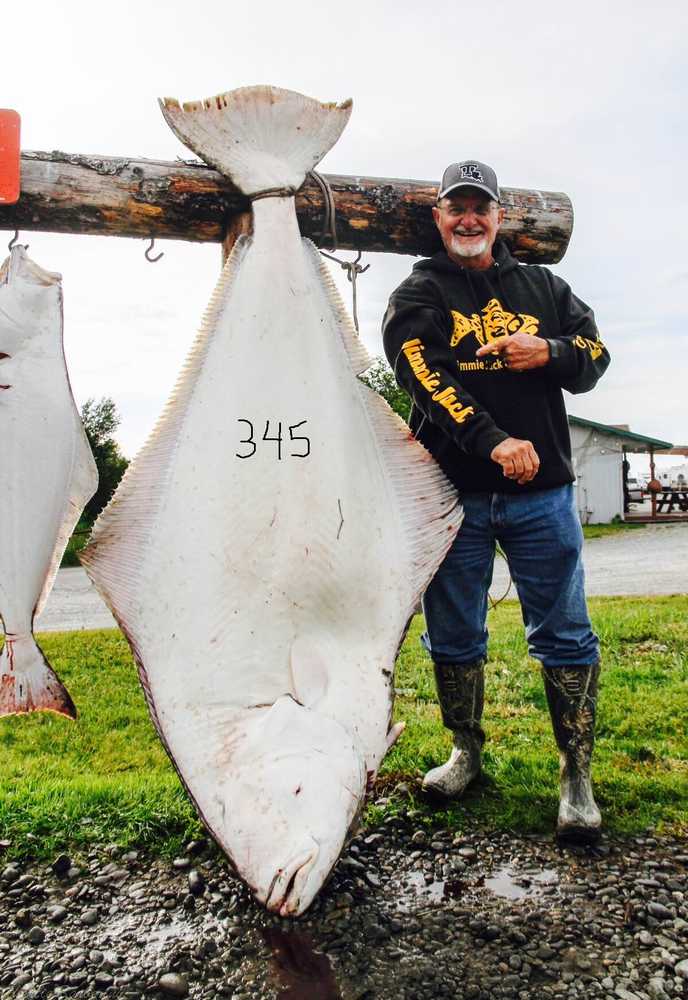“You’re not getting away from me!”
Victor Mallari wrangled a flailing sockeye salmon under his arm and clasped it tight, the fish’s mouth gasping in the fresh air. Without a bonker on hand, though, the 10-year-old held it still until its thrashing weakened.
He pulled the skin apart to expose the red lace of the fish’s gills and, satisfied, made for his and his father’s cooler, already loaded with sockeye salmon they had caught Sunday morning.
Mallari and his father joined throngs of Alaskans that arrived on the Kenai River beaches on Sunday to take part in the annual personal use dipnet fishery, which opened Sunday at 6 a.m. and runs until July 31. By midmorning, many had buckets of sockeye salmon, some taking flounder as well. Lines of people chatted and laughed, up to their chests in the silty Cook Inlet water, holding the ends of long poles with dipnets attached to the end, hoping for sockeye or, if they got lucky, just one king salmon.
Caroline Willis of Nikiski hauled her dipnet out of the water, the net weighed down with a flounder nearly as long as her arm. After showing it off for a moment, she laid the flatfish on the beach and invited her stepdaughter Emaline Cruikshank, 10, to dispatch it.
“Give it a good whack!” She said as the girl took a swing at the fish with an improvised bonker, a stick.
The Kenai River personal use dipnet fishery attracts users from across the state — only about 20 percent of the total participants lived in the central Kenai Peninsula. Residents of the Kenai Peninsula Borough made up a quarter of the total participants, while 54 percent came from Anchorage and 13 percent came from Mat-Su, according to the City of Kenai’s 2015 dipnet report.
Catch rates at the personal use fishery so far have been reportedly spotty but may improve as the run heads more toward its peak, said Jason Pawluk, acting area management biologist for the Alaska Department of Fish and Game’s Division of Sportfish in Soldotna.
King fishing is steadily improving. Since Fish and Game opened the Kenai River to bait, more people have been trying for king salmon and had better luck. Fish and Game’s creel surveys estimate that 1,504 kings have been harvested below the Sterling Highway Bridge in Soldotna so far this year, the most since 2009, according to the inseason assessment.
Pawluk said the water quality has improved and the water level has decreased, giving people a better shot at the fish. When the managers opened the river to bait, the biggest spike in effort came from unguided anglers, which is typical, he said.
“Guided effort didn’t really change much, but unguided anglers took advantage of bait being in the fishery,” Pawluk said. “You see less effort by unguided anglers compared to guided anglers with no bait.”
Keith Holtan, who guides from Beaver Creek Cabins and Guide Service on Beaver Loop Road in Kenai, was out on the water Wednesday and said fishing was not as good Wednesday as it was Tuesday, but altogether the season has been good so far.
“There’s been some nice-sized kings (caught),” Holtan said. “Collectively, all the guides I spoke to said it feels like the good old days.”
Sockeye are also still coming into the river in the tens of thousands, with the Kenai River sonar counting nearly 50,000 fish on Monday and more than 44,000 on Tuesday, for a total of 324,356 so far. The commercial fishermen in Upper Cook Inlet have harvested a total of 655,468 sockeye salmon so far, according to Fish and Game’s Division of Commercial Fisheries’ inseason harvest totals.
Catch rates should stay good as long as sockeye continue to come up the river in numbers greater than 25,000 per day. If they come in below that, it’s still possible to hook one, but it will take more effort, Pawluk said.
“Could you still hook one with a sonar count under 25,000?” he said. “Absolutely. It just makes it harder to catch your limit.”
On the Kasilof, sockeye rates are slower — between 2,000 and 4,000 fish have been coming in daily, according to Fish and Game’s sonar under the Sterling Highway bridge. Catch rates for kings have stayed fairly good, judging from the logbook data submitted by guides, Pawluk said.
The Russian River has been a puzzle this season — early on, it looked like the run had tapered out and would be small, potentially meriting additional restrictions. However, a burst of fish came later in the season, ensuring that Fish and Game would make the early-run sockeye escapement goal. Then it looked like the run was winding down again, only to balloon back up on Tuesday with 2,334 fish passing through the weir on Lower Russian Lake, the second biggest day of the season. Time and sampling will tell if these are late-run fish that are early or early-run fish that are later, Pawluk said. At the same time, throughout the season, fishing has been slow in the Russian River area, he said.
“Fishing reports we’ve gotten is that it’s really slow from the ferry and the cutbank down there,” Pawluk said.
Reach Elizabeth Earl at elizabeth.earl@peninsulaclarion.com.

